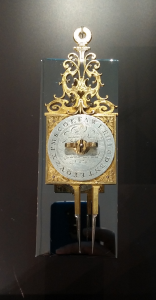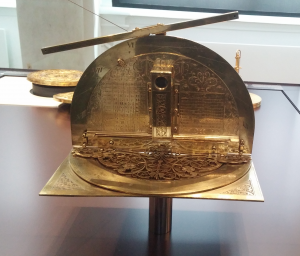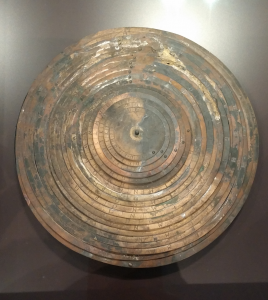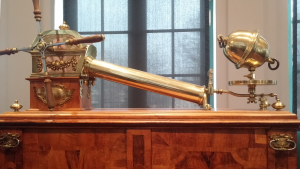
Nowadays it is without much thought that we can find out the exact time and date by a simple flick of our wrist, we will check our exact location using the GPS sensor of our smartphone, but that was not always the case. One stroll through the Royal Cabinet of Mathematical and Physical Instruments of the Zwinger Palace in Dresden is a nice journey to just a few hundred years back and the most advanced technological devices of that era.

To give a little context, this exhibition displays the collection in “chamber of the arts” of the Electors of Saxony. It conveys their love for measurement, astronomy and mechanical marvels dating back to the 16th century as well as their prestige and power. A whole exhibition room is dedicated to the earliest and best of modern surveying tools. Euclidean geometry, the trigonometry that almost every high-school student has had the chance to study, is the basis of it all. Triangulation, a methodology still used today, developed by Gemma Frisius in 1533 was the reason for the development of many a tools to measure angles. Such was the theodolite, the result of an attempt to a universal angle measuring device. Principles which gave birth to many other measuring devices with applications to trip measuring, cartography, even military applications.

Another part of the exhibition was dedicated to the mathematical and astronomical concepts on which the clock is based. The exhibition goes into explaining the difficulties faced by the engineers who were task with creating time-telling devices. At first, a connection between the prediction of the movement of heavenly bodies and time itself is established. And then, the mechanical aspect of the watch is put on display. Starting from the simplest of mechanisms, with weight pulleys, to the extremely sophisticated ones and the rise of pocket watches, it truly is a fascinating tour. And next to all that, there it was, one of the highlights of the exhibition, the calculating machine of Blaise Pascal.
Another very interesting tour is the Universe of Globes. An array of globes is presented. They range from simpler and/or smaller models, to portable ones and extremely sized ones. And that is only for the terrestrial globes. As was always the case back then, the love for the understanding of the “heavens” was great. A wide range of celestial globes with the positions of countless asterisms with respect to the earth can be viewed. A personal favorite was the representation of the moon and its far side, also known as the “dark side of the moon”.
Coming to a close, a nice summary of the whole experience that is the “Mathematisch-Physicalischer Salon” as well as the idea behind it is the top floor. It houses various objects of significance to the people of the time from both a scientific and a prestigious aspect, such as telescopes, vacuum pumps and mirrors. This duality of science and prestige is ever-present. An excellent example is the pump of Otto von Guericke, which was showcased in the palace and gathered large audiences. Finally, something that caught my attention and I guess stuck with me -for in our day of digital means is easily disregarded- was the translated inscription from Jacob Leupold’s vacuum pump: “Experimentation brings forth truth”.
Realising the pace at which science and technology have advanced gives younger researchers a new appreciation for their work and forces them to expand their limits. However, it must never be forgotten that methodologies, techniques and the research itself are as good as their weakest link and every step of the chain, no matter how time-consuming or tedious, requires proper validation and correlation to the real world.

